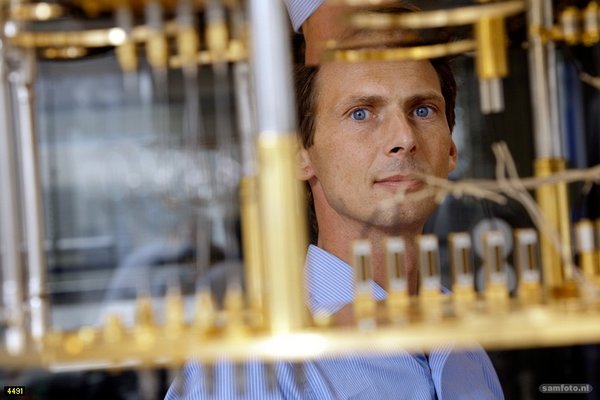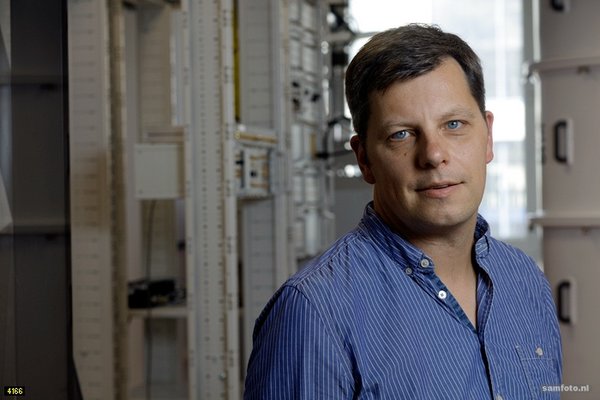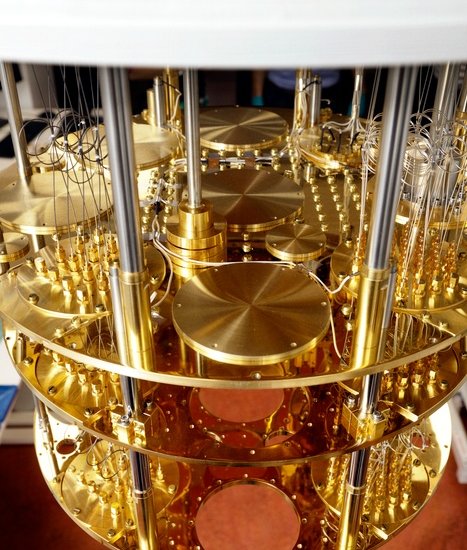The quantum computer exists, and it doesn’t
QuTech is a big international player in the field of quantum computing and quantum communications. The Delft institute is yet to bring a quantum computer online, but has introduced the first Dutch simulator. If quantum logic also applies here, the hardware will follow in double time.
Imagine: you want to pick the ace of hearts from a shuffled deck of cards. How many cards do you need to see to have a fair chance of picking the ace of hearts? For a 90% chance, you’d need to see 0.9*52 = 47 cards, is what Indo-American computer scientist Lov Grover would say. A human can do it in under a minute, and a computer much faster, but they would both have to see at least 47 cards one at a time and compare them to the ace of hearts to have a 90% chance of finding the one card.
Grover thought that quantum computers would solve problems such as this much faster. In 1996, he wrote one of the first algorithms for this purpose, which we now know as Grover’s algorithm. ‘The power of the quantum computer is that you only have to make 7 comparisons between the ace of hearts and the deck of cards, almost like only having to check 7 cards to have a 90% chance of finding the ace’, explains system engineer Richard Versluis. And he should know, as he was the one who defined the system requirements of the first online quantum computer in the country.
Will a quantum computer be capable of doing more than card tricks? You bet: great things are promised. Researchers hope to discover revolutionary new materials by simulating the behaviour of materials down to the atomic level; encrypt data for almost perfect security; crack codes that are impossible to crack with existing computers, and predict climate change with high accuracy.

Richard Versluis: ‘Each qubit added doubles the computing power.’ Photo © Sam Rentmeester
Amazing characteristics
The power of quantum is best described by using a metaphor: a standard computer talks in bits, where a bit can be 1 or 0, let’s say head or tails. In quantum, the coin keeps spinning; a quantum bit (qubit) can see 1 and 0 simultaneously, an amazing phenomenon also known as superposition. Qubits also have the equally amazing characteristic of being able to influence each other without being physically connected, what is known as entanglement. What’s most important to know is that this means multiple calculations can be carried out simultaneously.
IBM, Microsoft, Google and Intel are all busy building a quantum computer, but they are yet to rival the performance of standard computers. The major challenge is in scaling up to larger numbers of qubits, and controlling them. For standard computers, a few additional bits hardly matter, but they do in the quantum world. ‘With each qubit you add, you double the computing power’, says Versluis.

Jorrit van Wakeren: ‘We now offer the first platform for carrying out quantum algorithms.’ Photo © Sam Rentmeester
Quantum Inspire
QuTech, a collaboration between TU Delft and TNO, is also working on a quantum computer. In contrast to IBM and Rigetti, QuTech is not focusing on a single type of qubit. Instead, it is working on a platform that can support various types of qubits. This is done in the TU Applied Sciences building. The walls are freshly painted, and out of the unplastered ceiling sticks a round white metal pipe, lined on the inside with gleaming copper. Quantum Inspire, the name of the platform launched early this September, shines above the pipe in purple-blue neon letters.
Jorrit van Wakeren is the project manager responsible for Quantum Inspire. He is keen to introduce the public to the quantum computer and to the invention of new types of algorithms using the new quantum computer language QASM. ‘It demands a completely new way of thinking, something that the next generation will have to learn’, he says. Van Wakeren also wants to show companies how a quantum computer could help them in the future, so that they understand why they should already start investing in its development.
Working simulator
The first step towards a Delft quantum computer was recently taken: there is now a working simulator of 37 qubits, the maximum capacity the super computers at Surfsara, the national support centre, can handle. ‘A simulator like this is essential, you need to find out how so many qubits work together’, says Thorsten Last, who is responsible for hardware integration.
He continues: ‘Qubits are difficult to work with as they can be constantly interrupted, by temperature fluctuations or the magnetic field, for example, or by loose atoms, shortening their lifespan. That’s why it is important to stabilise qubits. We cool our qubits down to absolute zero (-273 degrees Celsius, ed.) to obtain quantum mechanical characteristics. We also use silicon, a material that makes the lifespan of qubits relatively long. Silicon is also standard in the semiconductor industry, facilitating commercialisation and upscaling.
The first chip that QuTech is currently working on, with the team of Professor Lieven Vandersypen – an expert in the field of electron spin qubits – has two silicon spin qubits. This may seem like a small number compared to the superconductive qubits IBM (up to 20 qubits) and Google (72 qubits) are working on, but there is another significant reason behind the team’s decision to use silicon instead of superconductive qubits. ‘A quantum computer with a million superconductive qubits is the size of a football pitch, which makes this technology less scalable, explains Versluis. Last adds: ‘A chip with ten superconductive qubits is already centimetres in length, while ten qubits on silicon only take up 700 nanometres. That is less than a micron’. The team hopes to have the world’s first quantum computer with silicon spin qubits online by 2019.

Thorsten Last: ‘We use silicon, a material that makes the lifespan of qubits relatively long.’ Photo © Sam Rentmeester
The future
‘But we won't have a quantum computer until you can use it for things that cannot be simulated and that you therefore cannot achieve with a standard computer’, says Versluis. ‘It will be another 15 to 20 years before we will be able to crack codes and calculate the chemical properties of medication’. And yet Van Wakeren puts things in perspective: such a timeline is comparable to the evolution of today's computers. After all, it was only 20 years ago that the first qubit saw the light of day, and we are now writing the first code for the first quantum computer. And the first transistors appeared in the 1950s, while 20 years later the first home computer was introduced at the Marin Computer Center. He concludes: ‘We are now offering the first platform for executing quantum algorithms. It is difficult to indicate the time line moving forward, as we still understand little of the complexity of the quantum computer of the future’.
